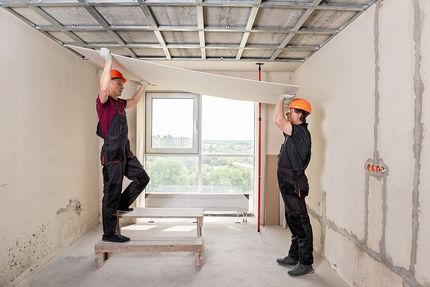Reliable Drywall Repair Techniques to Recover Your Wall surfaces
Reliable Drywall Repair Techniques to Recover Your Wall surfaces
Blog Article
Drywall Installation Facilitated: Tips for Perfect Outcomes
Drywall installment is typically perceived as an overwhelming task, yet with the right technique and knowledge, it can end up being a manageable undertaking. Mastering strategies for cutting, hanging, and completing drywall can significantly affect the end result.
Selecting the Right Products
Selecting the proper materials for drywall setup is crucial to accomplishing a sturdy and aesthetically pleasing surface. drywall repair. The key component, drywall sheets, normally can be found in different densities, with 1/2-inch sheets being standard for indoor walls. For areas calling for added moisture resistance, such as washrooms or kitchens, consider utilizing environment-friendly board or cement board, which are specifically developed to hold up against humidity

In addition, picking the right bolts-- either nails or screws-- is essential for securing the drywall to the framing. Drywall screws are generally preferred for their holding power and lowered threat of standing out. Last but not least, take into consideration the complements such as primer and paint, which not only enhance the appearance yet additionally shield the drywall from wetness and wear.
Preparing the Installment Location
Before beginning the drywall installment process, it is vital to prepare the installation location extensively. This preparation involves numerous important steps to ensure a smooth and effective project. Clear the location of any type of furnishings, home appliances, or obstructions that can hinder accessibility. A tidy workspace decreases the danger of damages to existing products and permits effective movement throughout installation.
Next, check the wall surfaces and ceiling for any flaws, such as cracks, holes, or mold and mildew. Address these concerns ahead of time; patch any kind of damages and enable enough time for repair work to completely dry. Additionally, make sure that electric outlets, switches, and plumbing are effectively positioned and represented, as this will certainly influence drywall placement.
Think about the ecological problems too. A stable temperature and humidity level are important for ideal bond and efficiency of the drywall products. If needed, make use of a dehumidifier or heating system to develop ideal problems.
Cutting and Hanging Drywall
The trick to reliable drywall setup lies in the precise cutting and dangling of the panels. Utilize a straight edge and an energy blade to score the drywall along your measurements, after that snap it along the scored line for a tidy break.

Constantly work from the top down and entrusted to right, guaranteeing that you keep a staggered pattern to enhance stability. Properly hanging the drywall sets the structure for a smooth coating, ultimately causing exceptional cause your drywall project.
Taping and Mudding Strategies
While proper cutting and hanging of drywall establishes the phase, the next vital step entails mastering taping and mudding methods to make certain a seamless surface. Insulation is essential for strengthening joints and protecting against cracks; it includes installing tape right into the used joint compound (mud) Start with a high quality fiberglass or paper tape, using the tape over the joint and pushing it right into the wet mud using a taping knife, making sure no air bubbles continue to be.
Once the tape is in location, apply a thin layer of joint substance over the tape, feathering the sides to develop a smooth change to the drywall surface area. Allow this layer to dry completely before sanding it lightly Read Full Article to eliminate flaws. check that Repeat this procedure, using added layers of mud as essential-- typically a couple of coats-- while gradually widening the application area with each layer to achieve a seamless look.
After the final coat dries out, sand the surface area with a fine-grit sandpaper till smooth. drywall installation. Keep in mind to wear a mask during sanding to avoid breathing in dirt fragments. Understanding these taping and mudding strategies is important for attaining a professional-quality surface in your drywall setup
Completing Touches for Perfection
Achieving a remarkable drywall installment exceeds mudding and taping; it culminates in the finishing touches that boost the total look. These final steps are crucial in making certain a professional-grade coating that improves the aesthetic appeals of your space.
Begin by sanding the dried out joint compound to develop a smooth surface. drywall contractor. After fining sand, wipe down the walls with a damp towel to remove any kind of dust fragments, making sure a clean surface area for paint.
Following, apply a guide especially developed for drywall. This action is important, as it helps seal the joint substance and supplies an uniform base for the overcoat. As soon as the primer dries out, inspect for any type of imperfections, and retouch as required.
Conclusion
Finally, effective drywall installation depends upon the mindful selection of products, thorough preparation of the installment location, and accurate implementation of reducing and hanging techniques. Mastery of taping and mudding procedures is crucial for achieving a smooth surface. In addition, attention to finishing touches, including priming and touch-ups, makes sure a professional-grade outcome. By adhering to these guidelines, the quality of craftsmanship can be dramatically enhanced, contributing to the overall aesthetic and performance of the room.
Drywall setup is commonly regarded as an overwhelming job, yet with the appropriate strategy and expertise, it can come to be a convenient undertaking.Picking the proper products for drywall setup is important to accomplishing a resilient and aesthetically pleasing finish.Prior to starting the drywall setup process, it is important to prepare the installation location extensively. Grasping these you could try this out taping and mudding methods is crucial for achieving a professional-quality coating in your drywall installment.
In final thought, successful drywall installment pivots on the careful selection of products, extensive preparation of the installment location, and accurate execution of reducing and hanging techniques.
Report this page